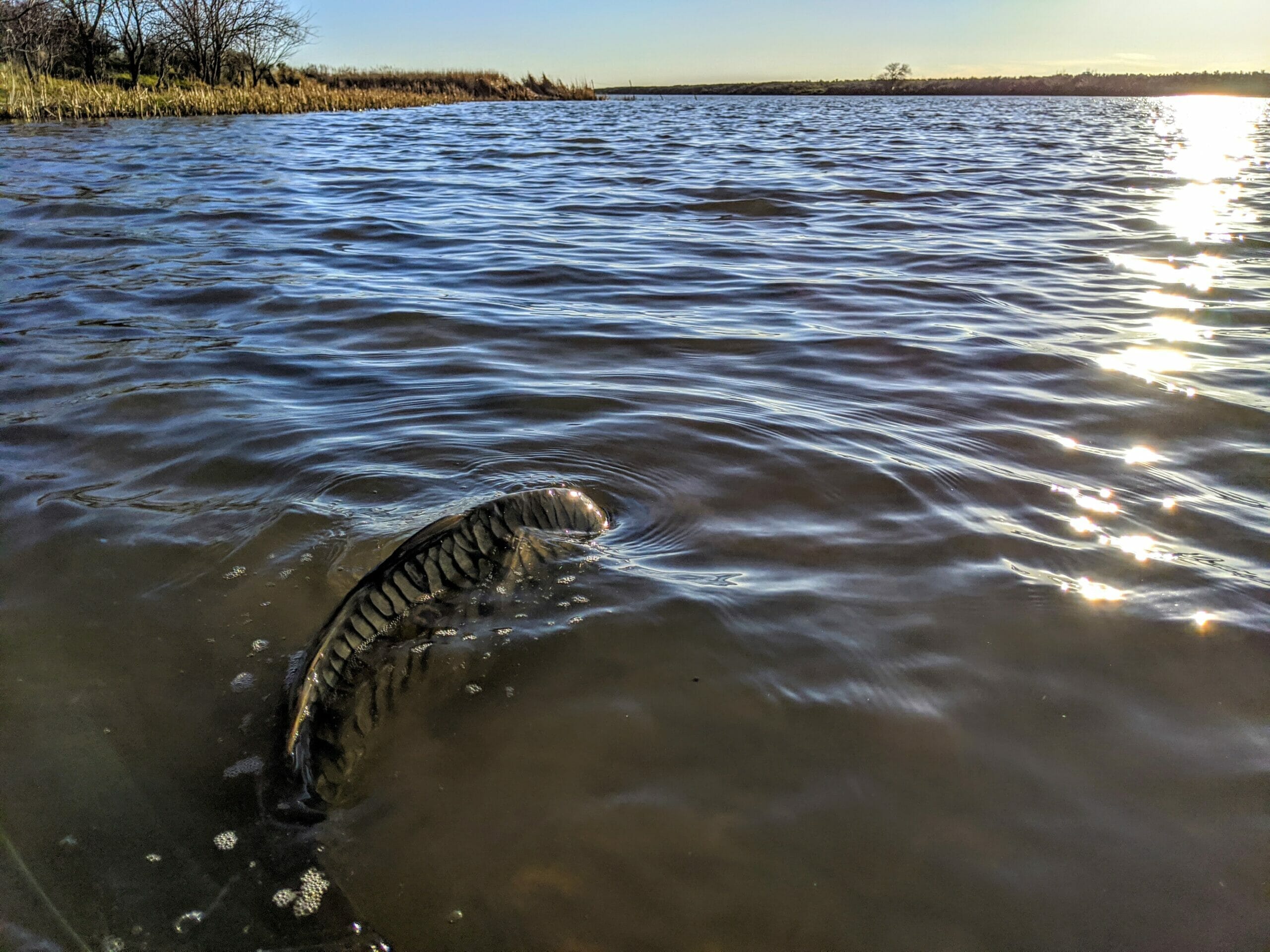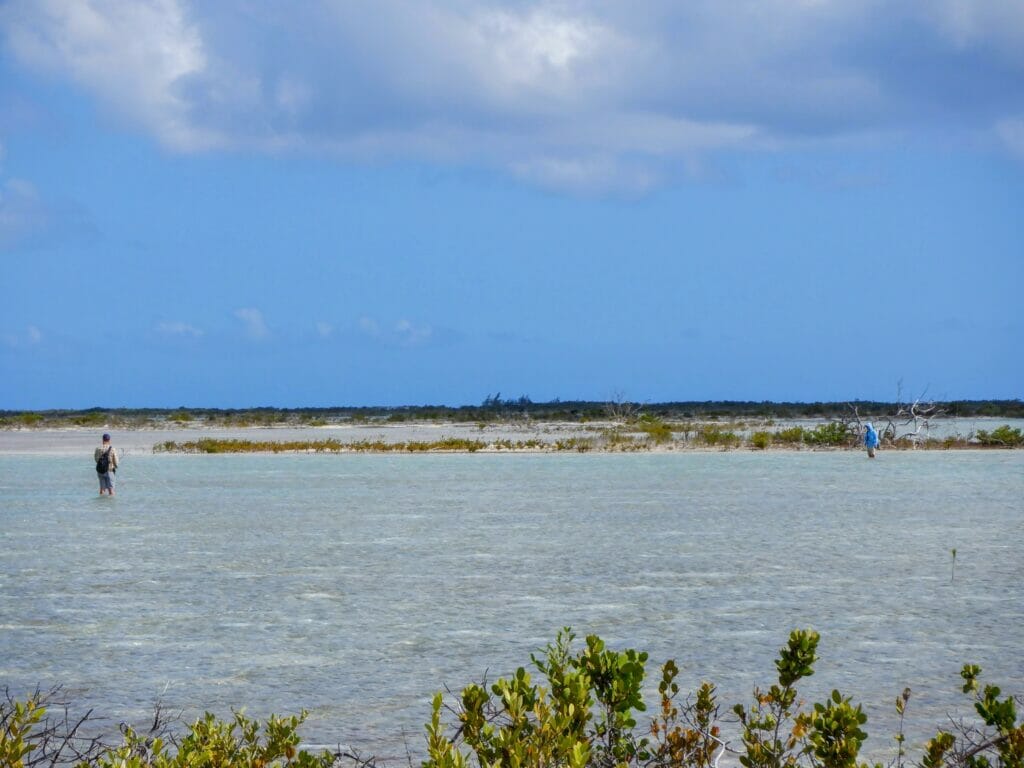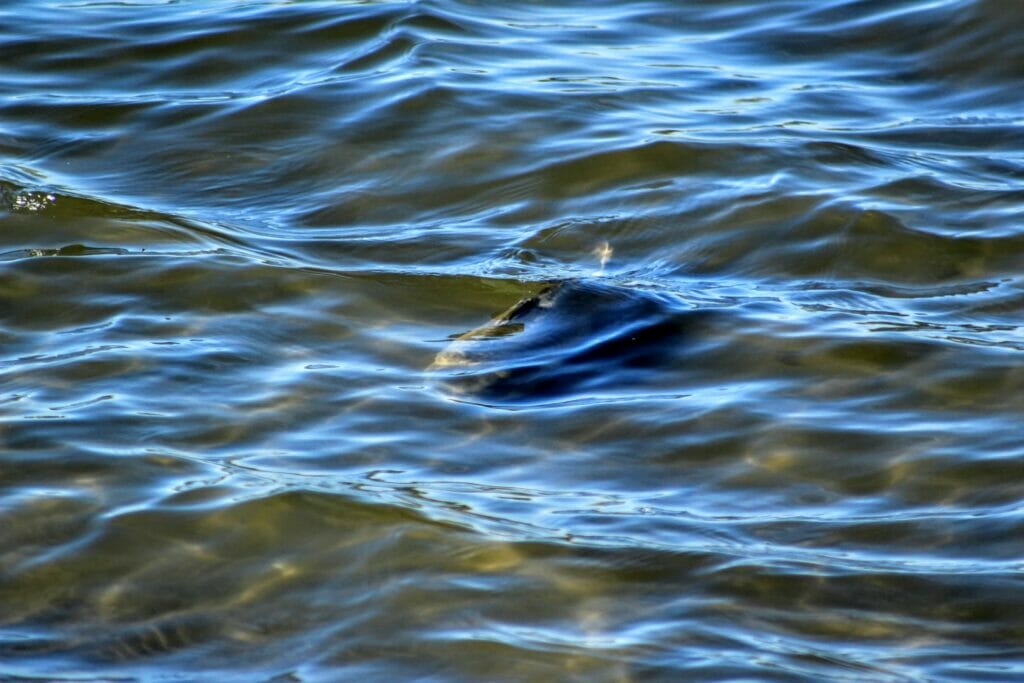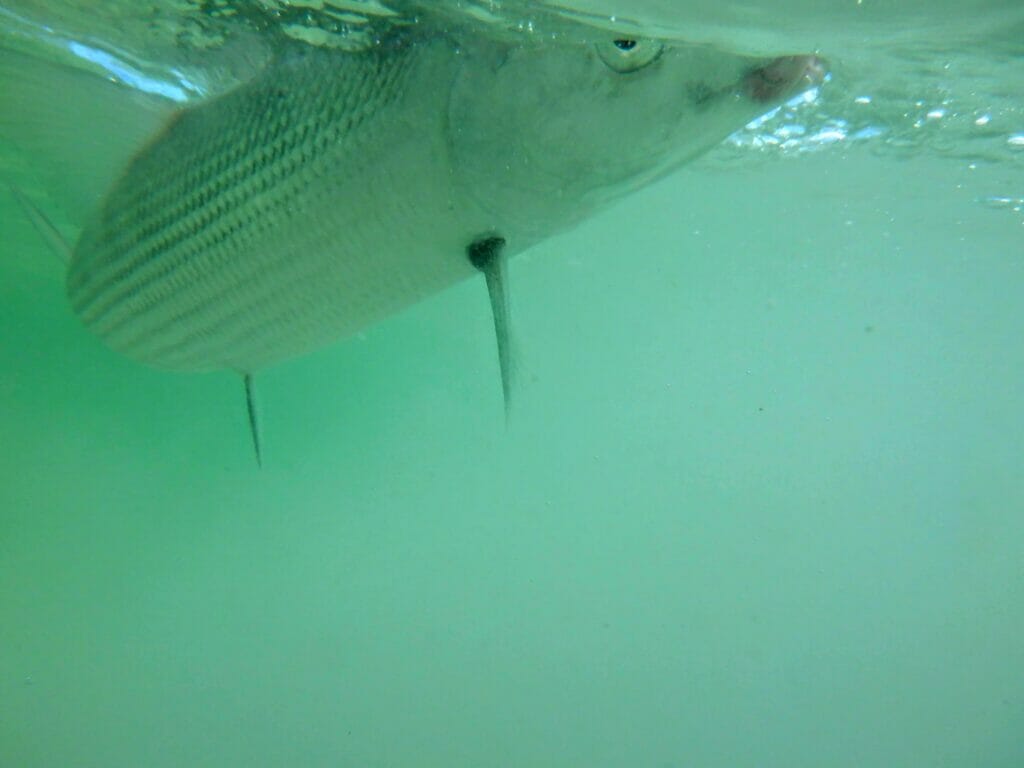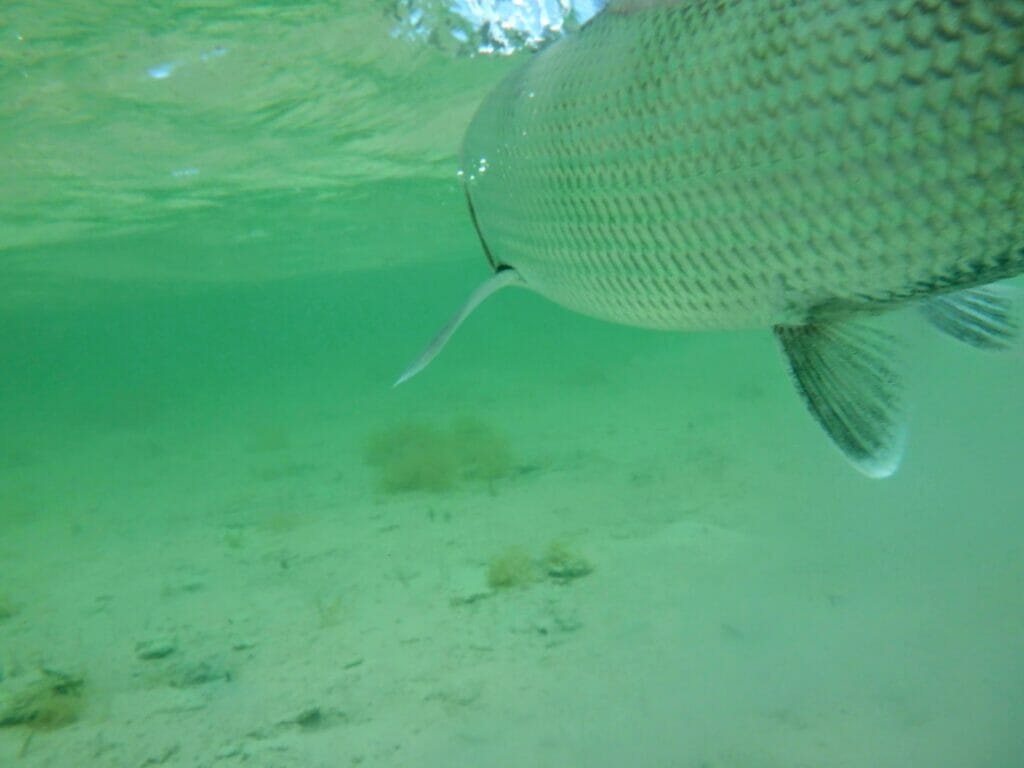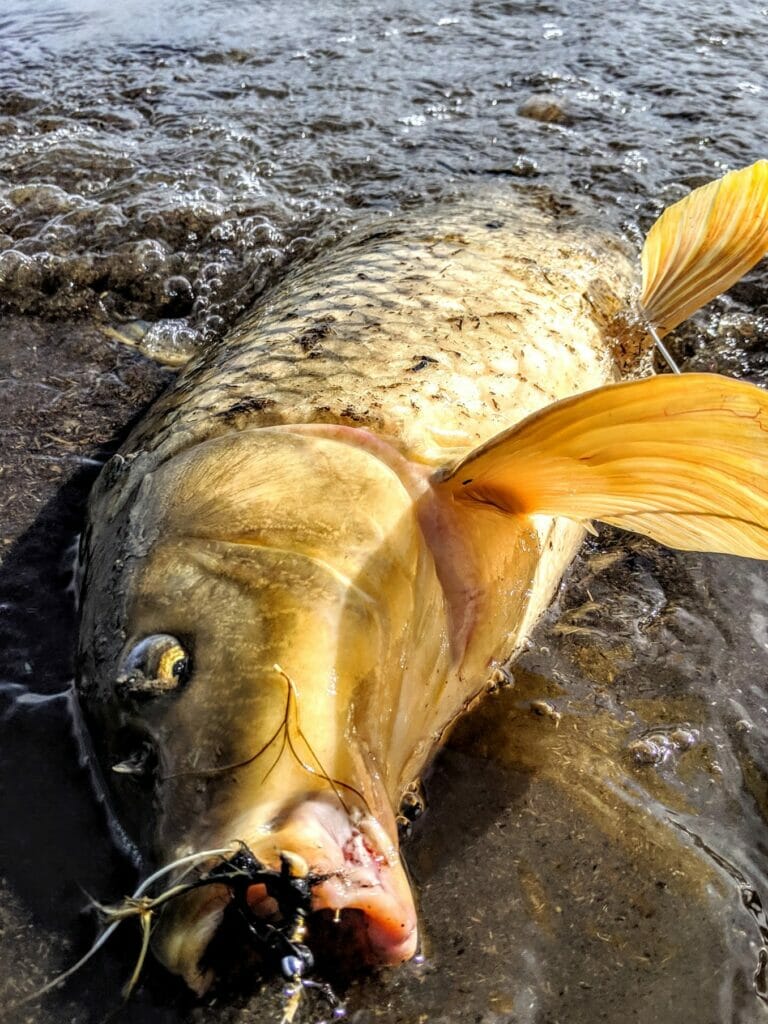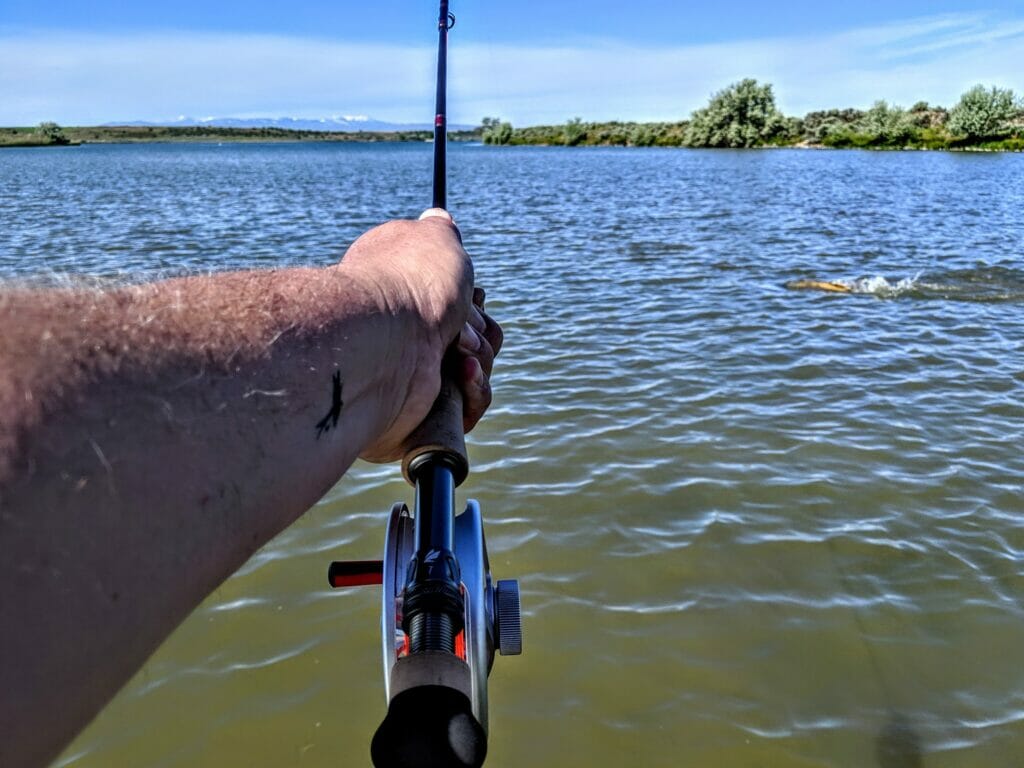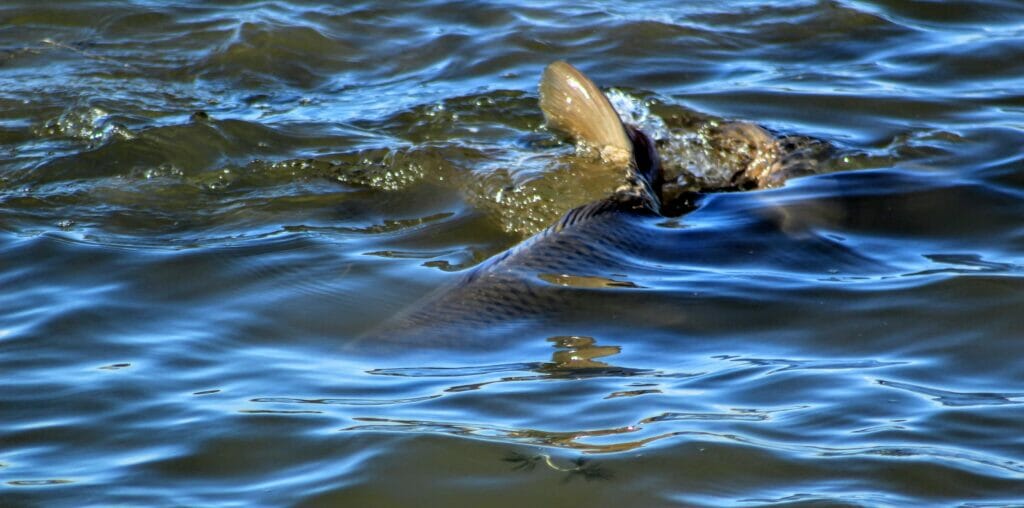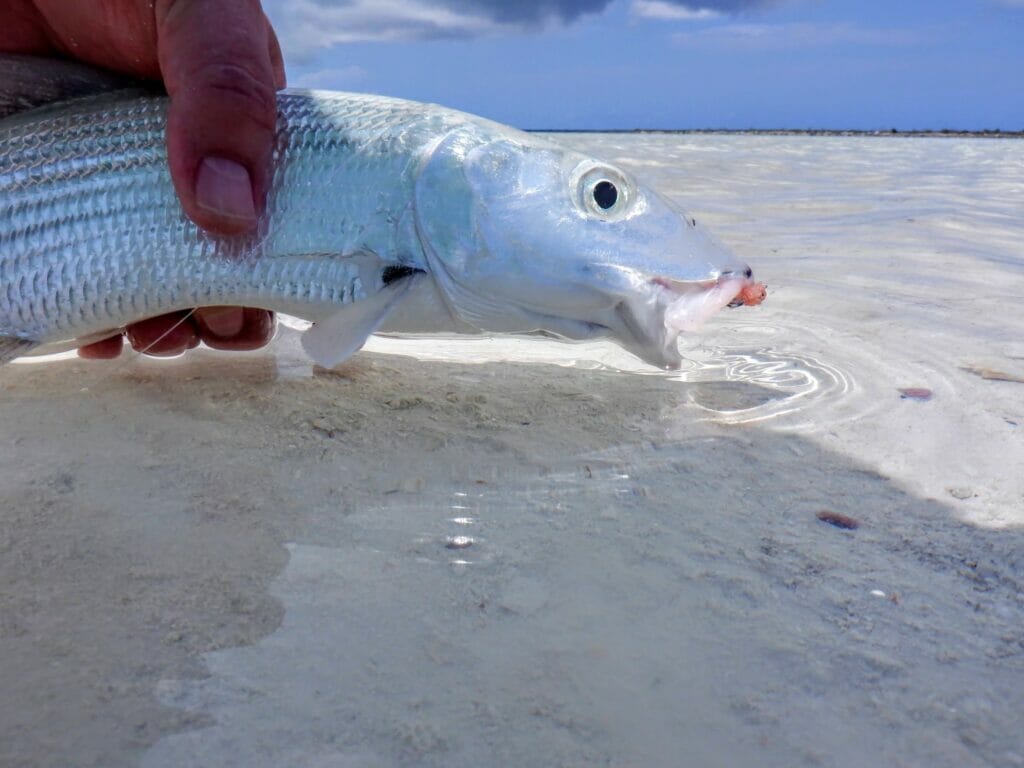I just got back from a week in the Bahamas, where I put in long days on the flats stalking wily bonefish. It was good practice, because now, as runoff starts to cloud my local trout rivers, it’s a time for carp.
Wait. Bonefish? As a practice run for carp?
Oh, hell yeah. Particularly if you’re after carp in shallow water. Here in eastern Idaho, carp start moving into the shallows of our rivers and reservoirs sometime around the middle of April, depending on the weather. If we can get a string of sunny days in the upper 60s or low 70s, it’s time to put the winter trout tackle away and pull out the big guns. Seven- and 8-weight rods are the norm for carp, both because long casts into the wind, often with a big fly at the end of the leader require such hardware, and because the quarry can weigh in at 20 pounds or more.
Carp in shallow water do everything bonefish do on the picturesque flats of the Caribbean. They root for crustaceans, tails out of the water. They cruise in giant schools en route to feeding flats. And, yes, they fight like the devil, and make you doubt the veracity of your backing knot.
In the shallows, carp act a lot like bonefish, albeit their rangier cousins. Last week, I was targeting cruising pairs of big Bahamian bones — picky fish that refused flies as often as they ate them. This week? Cruising pairs and trios of ginormous carp that can be just as dietarily discerning, if not more so.
Carp in shallow water do everything bonefish do on the picturesque flats of the Caribbean. They root for crustaceans, tails out of the water. They cruise in giant schools en route to feeding flats. And, yes, they fight like the devil, and make you doubt the veracity of your backing knot.
Granted, the basalt bluffs and the soupy water of some backwater slough on the Snake River don’t carry the same scenic cache as a stunning, hard-sand flat where sleek bones teem in from the Atlantic to feed, but the experience isn’t very dissimilar.
They don’t call the carp the golden bonefish for nothing.
So, yeah, intentionally or otherwise, last week in the Caribbean was my preparatory excursion for the carp that swim so close, I don’t even need a full tank of gas, let alone a plane ticket to Dead Man’s Cay.



